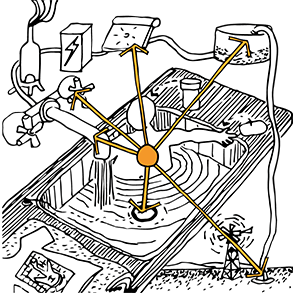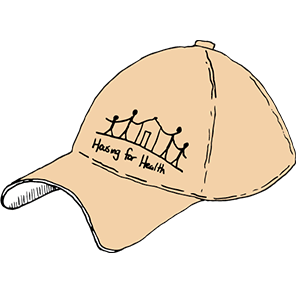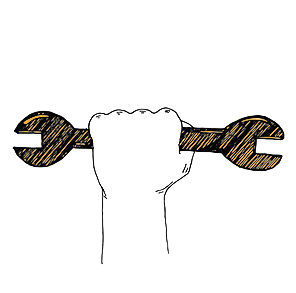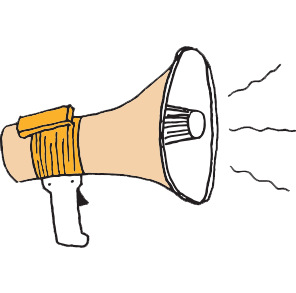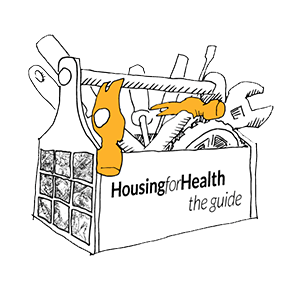NEWSLETTER | DECEMBER 2024
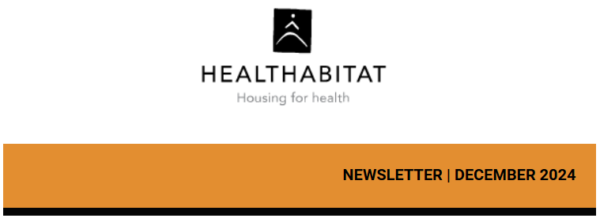
What a year 2024 has been! Thank you for your continuing support and interest in our work, it is crucial in helping us do this important work.
A total of 10,564 houses in 281 Housing for Health (HfH) projects have now been surveyed and fixed, with almost 3000 Indigenous staff employed on the projects.
Since our June newsletter, HfH projects are ongoing across Australia and internationally, and we continue to do advocacy work. We are focusing on the roll-out of the National Partnership on Northern Territory Remote Housing ($4 billion) and the Housing Australia Future Fund – Remote Indigenous Housing Payment ($200 million), especially as the details are being developed and finalised. As we have been saying for the last 25 years (e.g in the June 2024 newsletter), whilst new houses are needed, they will not reduce functional crowding if the existing houses do not function.
Please check out our news page and social media regularly for news, stories, research and our advocacy work.
We would like to wish you all a happy and safe holiday season and a refreshing start to the new year. We look forward to working with you and sharing our work in 2025.
HH Team
Below is a snapshot of what HH has been up to and project updates…
Stephan Rainow (Healthabitat Director) retires from Nganampa Health after 40 years
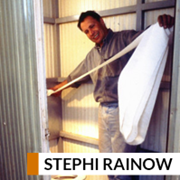
Image: Healthabitat director, Stephan Rainow doing the ‘Toilet paper test’
Stephi Rainow, founding Director of Healthabitat and driving force behind the UPK Report (Uwankara Palyanyku Kanyintjaku – a Strategy for Well-Being), retires from Nganampa Health Council after dedicating the best 40 of his life to improving environmental health outcomes for the 2600 people of the APY Lands, SA.
Relentless, grounded, unwavering dedication and commitment to Nganampa’s UPK project, Stephi has never strayed nor lost sight of the importance of this work to the people on the ground who just want a toilet that works, a healthy place to cook and somewhere to shower. A living legend, whilst staying on with Healthabitat, Stephi will be sorely missed by Nganampa Health and the thousands of people across the APY Lands who enjoy healthier lives today and into the future as a direct result of this man’s life work!
Housing for Health: The Guide (NIHG) has been updated!
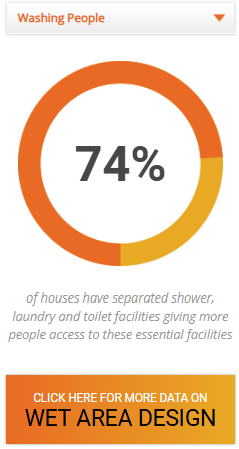
Image: Data Snapshot from HLP1: Washing People
The National Indigenous Housing Guide, is a practical resource to support the planning, development, design, construction and maintenance of housing for Indigenous people. The resource is divided into three main parts including safety, health and housing and healthy communities.
We have recently updated the data throughout The Guide (NIHG) and how the house function data has changed over time. Check out the updated data – for example, HLP1 Washing People / B1.5 Showers.
Whilst there, also check out the Toolbox feature of The Guide. This is a key tool that allows you to select the relevant Healthy Living Practices to inform Design & Specifications or Maintenance programs.
Accrediting Team Member Training
We are working to formally accredit the current training we provide to the community members employed on Housing for Health projects with a Registered Training Organisation (RTO). This will provide community members with competency in at least 1 of the 9 units in Certificate II in Indigenous Environmental Health. This will add to the very limited opportunities for tertiary training offered in remote communities and add opportunities for further training and employment pathways.
Healthabitat is setting up to run a pilot program for accrediting Team Member training, including putting in place the training and assessment processes, upskilling the HH team to provide the formal training and integrating M&E process to capture the pilot program.
We hope to get this up and running as a pilot project, beginning on projects in early 2025.
Stay tuned!
Local Team Feature
Tyson | Housing for Health (HfH) Plumber’s Reflection
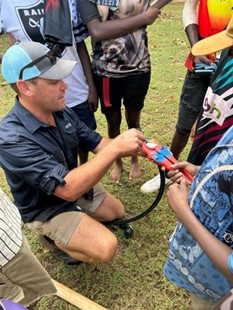
Image: Tyson working on remote IWSH projects providing important training to the next generation of local plumbers.
“Plumbing is the work that we do every day, but it takes an experience such as working with Healthabitat that makes you step back and realise the impact.”
Housing for Health (HfH) Projects
HfH projects continue across Australia and internationally.
In Australia, we currently have 13 projects underway with survey-fix work being done on 482 houses.
Northern Territory
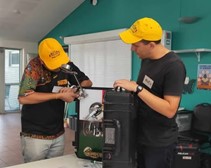
Image: Team Leader Owen Kelly training team members how to change a shower rose on the demo training boards
NT projects continue as a part of the Healthy Homes program until 2027. The first projects will kick off in East Arnhem land at the beginning of 2025, where over the past 6 months we have been getting prepared.
In November, we completed a Maintaining Houses for Better Health (MHBH) project with Community Housing Central Australia (CHCA) in Mparntwe. A MHBH is a condensed Housing for Health project, with only the survey-fix 1 component. It is a part of CHCA’s Strategic Plan to ‘provide services that promote the 9 Healthy Living Practices and Housing for Health principles’, and are using the MHBH survey to check if they are scoring a minimum of 75% of houses achieving full Critical Healthy Living Practices Scores. We are in full support of CHCA’s vision and goals and congratulate them on this ‘pioneering’ strategic focus.
New South Wales
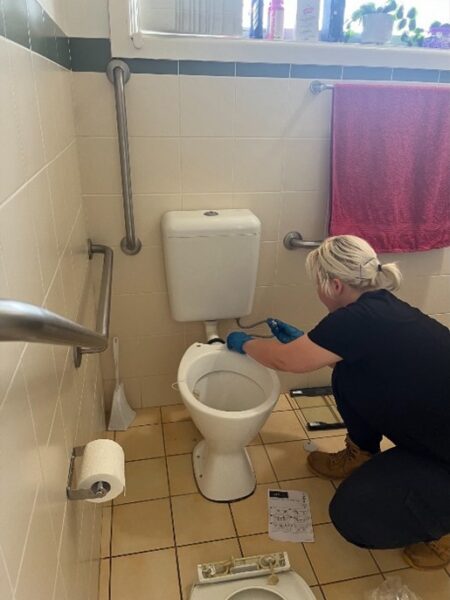
Image: Team Member fixing toilet on NSW HfH project, November 2024
Over the past 6 months, in partnership with NSW Health, 11 HfH projects are underway with survey fix underway or completed in 325 houses. NSW Health continues to enhance these projects with their ongoing value adding projects on issues such as climate adaptation and energy consumption.
Read more about the work of NSW Health, here.
Advocacy
National strategy for Food Security in Remote First Nations Communities
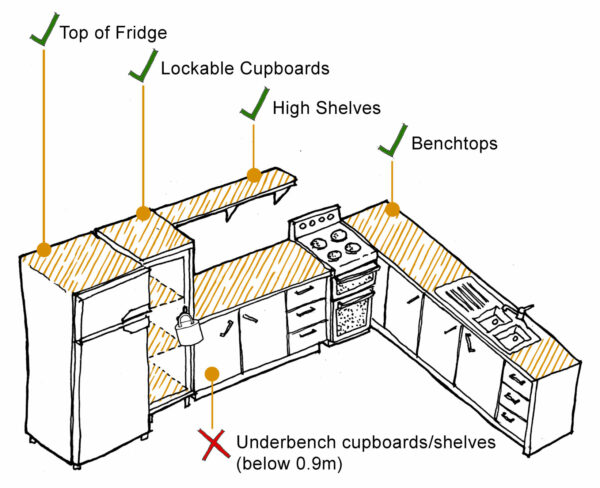
Image: Extract from Healthabitat’s ‘HLP4: Prepare store and cook food safely’ training poster
Healthabitat offered a submission to the strategy encouraging the discussion to broaden to the entire living environment and use of the 9 Healthy Living Practices (9HLPs) as a holistic framework for health.
Thermal Imaging
In recent projects, Bobbie Bayley (NT Project Manager) has been using a portable thermal imaging camera to assess the thermal performance of homes at different times of the year. By linking this data with other findings from the Housing for Health survey-fix data, we’re gaining valuable insights into how homes function thermally – Is the house too hot or cold?
Our community teams have been very interested in learning about the technology and using it to learn about the houses in their communities.
Read more about it here.
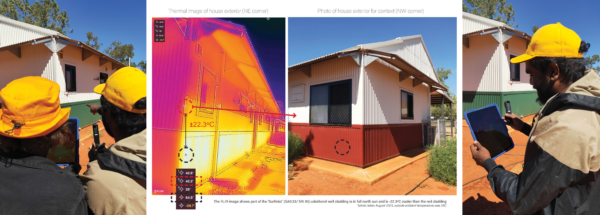
Image: Community members learning about and using the Thermal Imaging camera on their houses
Nepal
Nepal Sanitation Projects
Please keep in mind the Nepal school sanitation projects we continue to support with ongoing maintenance, in your gift giving. These toilets must continue to function to positively impact the health of children and communities. You can directly donate to this work here.
Learn more, purchase The Nepal Toilet Design Guide (100% proceeds support maintenance), or donate directly via the HH website. If you prefer, you can request the book to be sent to our Nepal team to distribute to schools and organisations.

Images: Nepal Project Manager, Bishnu, teaching school staff (dedicated maintenance managers) how to complete the tests and fixwork when needed.
Other items of interest
Update! ‘Race to 2030’ APY Lands Energy Efficiency Retrofit Pilot Project
HH continues to be an active ‘partner’ in this project. In 12 study houses, the project has now installed and is monitoring data loggers and are designing the various levels of Retrofit Design to be applied to the study houses. They have built replica test rooms in Adelaide to workshop retrofit details and ideas and are focusing on the development of the community and trade education materials. These include:
- Working with ICANZ and CodeSafe to develop some great instructional videos on the value and installation of insulation
- Working with Efficiency Matrix to compile a suite of videos focused on building performance, air tightness and insulation
- Working with the Net Zero Energy Builder Learning Hub to include the APY pilot project content.
The pilot is set to be completed in November 2025, with re-testing of houses post-retrofits in August 2025.
Central Australian Researchers RE-ITERATE the social determinants of health
This work reminds us that the health ‘gap’ between First Nations and non-First Nations Australia is fundamentally driven by the social determinants of health
The partnership and project was initiated in response to concerns raised by Tangentyere Council Board Directors and Town Camp members about energy insecurity and the health impacts of climate change and current housing suitability.


